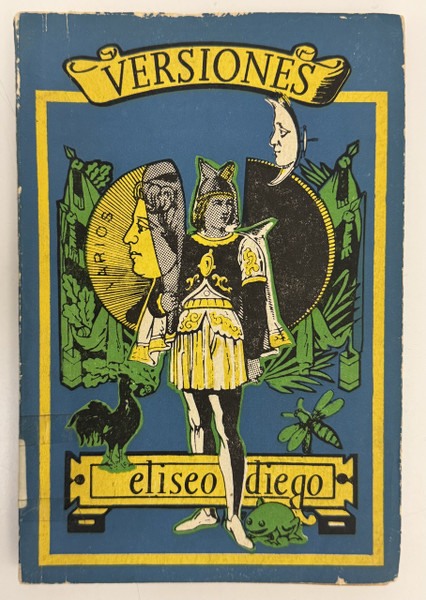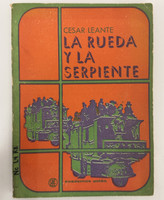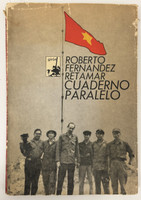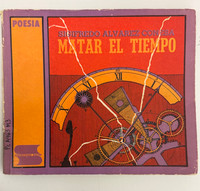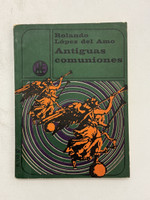- Travel
-
Exhibits
- La Portada Cubana
- Immortal Cuba: Artists Take on Their Heroes
- Seattle Poster Exhibit
- Sandra Dooley & Alejandrina Cué
- The Art of Wayacón
- Cuban Folk Art
- Cuba In Black And White
- 25 Years of Cuban Art Space
- Summer Folk Art Expo
- ¡SPRING AWAKENING FROM CUBA!
- Celebrating The Art Of Cuban Women
- Celebrating Paper, Affordable Art from Cuba
- Art of the Revolution
- Outsider Art
- Lost and Found
- En la lucha: Celebrating Cuban Women and Their Art
- Cuban Art Stash
- 100 Fires: 5 Cienfuegos Artists' Work on Paper
- Waya + Monte! Magic Realism in Cienfuegos
- Viva Cuba Viva! Poster Show
- Cultivando Sueños
- Black Lives Matter in Cuba Jan 9-March 27
- Leandro Soto: Crónicas visuales
- Cuban Canvas
-
Archive
- Global Reflection 2018: Spirit and Community
- Exhibit in the cloud: Contemporary Works on Paper
- MADE IN CUBA! MINNEAPOLIS EXHIBIT
- Cuban Posters and Photography from CCS collection
- AUTUMN SALE! Sept/Oct 2017
- SPRING ARTS AND CRAFT SALE
- Vuelo Directo/Non Stop: Alberto & Alejandro Lescay
- The Many Faces of Fidel
- Somos
- Made in Cuba!
- The US empire in Cuban graphics
- Made in Cuba/Seattle exhibit
- Entre Nos
- Looking Back
- Cuban Art Space
- Membership/Donate
- About Us
- Cuba News
-
The cover of "Versiones" features Cecilia Guerra's vibrant design showcasing theatrical figures arranged within an ornate yellow-framed composition against a rich blue background. The central image depicts costumed performers - including figures with elaborate headdresses, theatrical garments, and carnival masks - surrounded by allegorical elements like roosters and foliage that evoke both classical European imagery and Cuban folk traditions. The design transforms the book into a stage set, with the decorative yellow border functioning as a proscenium arch framing the performance. This theatrical aesthetic perfectly captures Diego's approach to "versions" - his poetic translations and adaptations that bridge different cultural and literary traditions. Darío Mora's overall design work complements Guerra's cover, creating a cohesive visual experience that celebrates the performative and transformative nature of literary translation.
Published as part of the distinguished "Contemporáneos" series, "Versiones" presents Diego's translations and poetic adaptations, demonstrating his mastery of multiple literary traditions and languages. The work showcases Diego's role as cultural mediator, bringing international poetry into Cuban literary discourse while maintaining his distinctive voice. The book includes a dedication "A Cintio, a Fina" acknowledging his connections to fellow Orígenes group members Cintio Vitier and Fina García Marruz, reflecting the collaborative intellectual environment that fostered Cuban literary renaissance in the mid-20th century.
Eliseo Diego (1920-1994) was born in Havana on July 2, 1920, and traveled extensively as a child through France, Switzerland, and later the United States. He graduated with a doctorate in Pedagogy and served as English inspector for the Ministry of Education and professor of English and North American Literature in teacher training courses. A collaborator with the influential magazines Clavileño and Orígenes, Diego published poetry and narrative works that positioned him among the foremost Cuban and Continental poets. His previous publications include "En las oscuras manos del olvido" (1942), "Divertimentos" (1946), "En la Calzada de Jesús del Monte" (1949), "Por los extraños pueblos" (1958), "El oscuro esplendor" (1966), and "Muestrario del mundo o Libro de las maravillas de Boloña" (1968, 1969). Featured in Cintio Vitier's anthology "Diez poetas cubanos" (1948), Diego cultivated poetic essay writing and since 1962 directed the Department of Children's Literature and Narratives at the José Martí National Library.
-
-
Discover More at the Center for Cuban Studies

